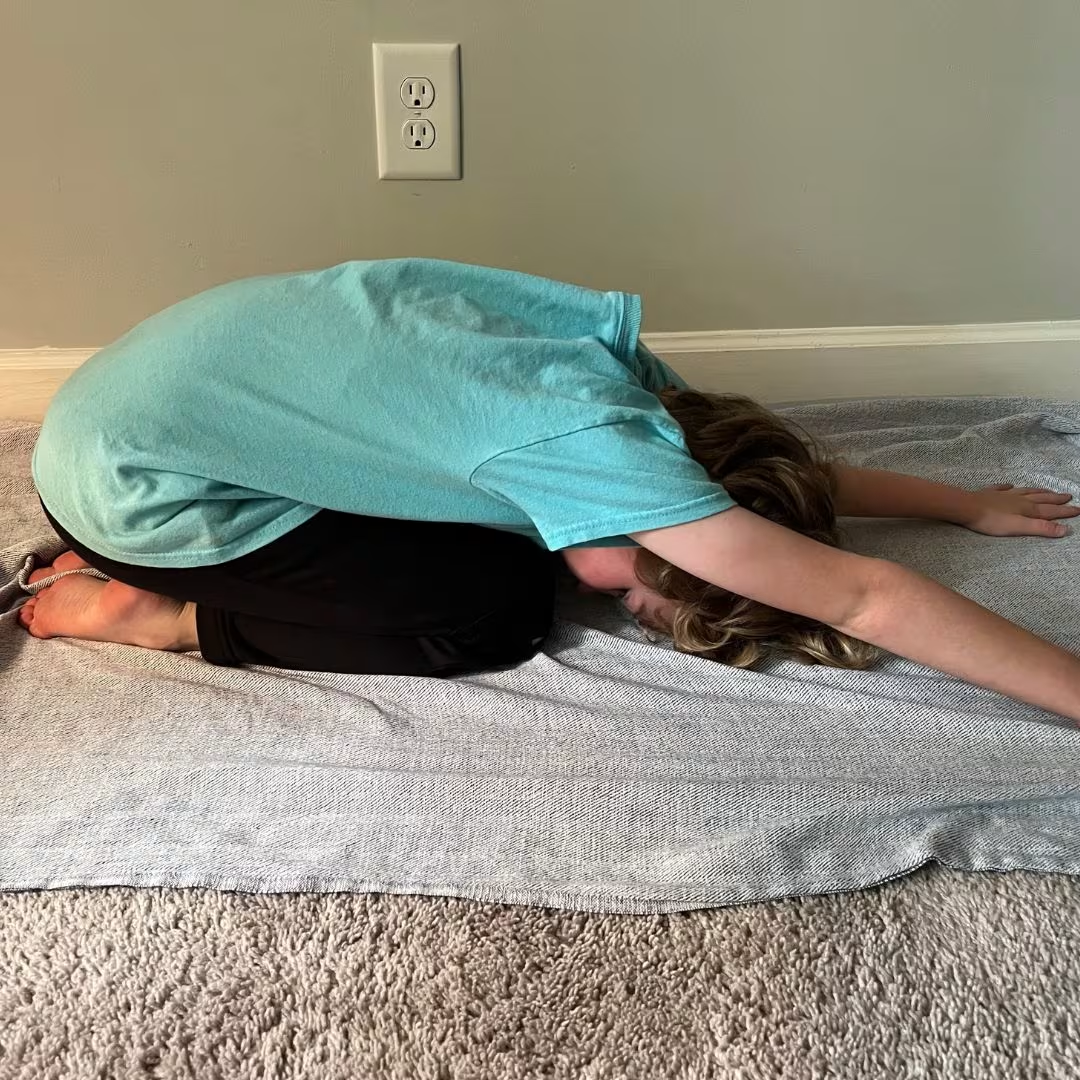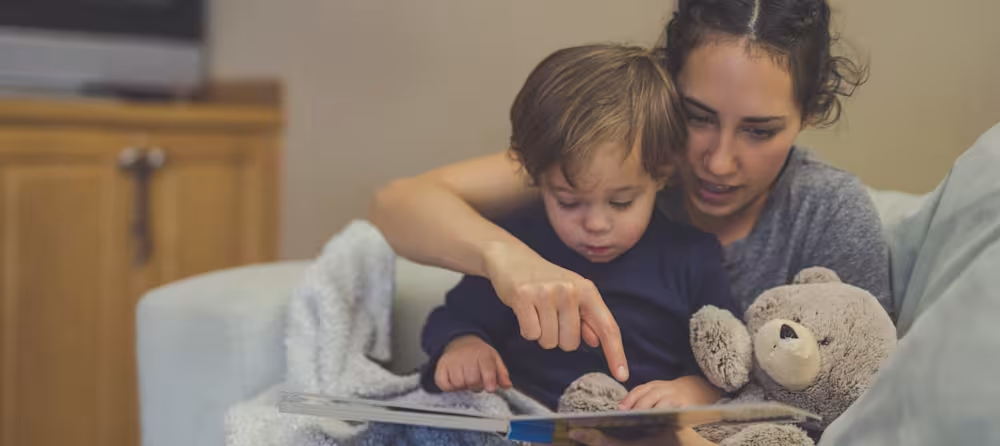Yoga poses to calm kids down
Updated Aug 13, 2025

Did you know that pretending to be a dog or standing tall like a tree can calm your kids? Yoga is not just fun and games for kids - it can inspire them to use their bodies, minds, and breath to be more focused, relaxed, strong, and flexible, both in their thinking and their bodies.
In our high-stress, on-demand, overbooked lives, our kids see us in a constant hustle. Unless we’re intentional about making time for relaxation, we model stress and busyness for our kiddos. Yoga is a fun way to take a break, bond with your child, and teach relaxation simultaneously! It may be the stress break your family needs to slow down and feel less stressed.
How to start kids on yoga
It’s never too early to introduce your child to yoga. Babies and toddlers love watching parents practice yoga. They delight in seeing your body move through space in new and unexpected ways, and they may even decide to mimic you. You can invite children of all ages, even babies, to join in on the fun and relaxation too.
7 quick tips to help you and your kids get started with yoga
1. Explain yoga to your child so that they know what to expect
I love the definition from , which is one of the three yoga teacher training I’ve taken and have always used to explain yoga to children.
“Yoga is a way to exercise our bodies, our breath, and our minds all at the same time. Yoga makes us feel great! Yoga is a very ancient science that helps us to develop flexibility and strength in our bodies, and happiness and peace in our mind.”
If your child is a baby or toddler, you can just say something like “Yoga helps us feel strong and good.”
2. Clear the space
Dedicating a space in the house to yoga, that’s free of clutter and distractions (e.g. Legos, playdough, snacks) will give you and your child an opportunity to focus.
3. Choose a time
Spontaneous yoga is awesome, but picking a time to practice every day will help the positive habit to grow. Routines help them feel grounded! Kids are most comfortable when they know what to expect and what is going to happen next.
4. Make it playful to draw them in and keep them engaged
Yoga looks different with kids! Their down dogs can bark, their trees can feel the breeze, and butterflies may flutter their wings. Try creating yoga poses for all of their favorite animals, trucks, or dinosaurs in their favorite book. Make up a yoga pose for all of the letters in their name. Do yoga poses with their stuffed animals (you can become the animals with your bodies and then help the stuffed animals do yoga poses too!). Get a deck of yoga cards. Or find a kids' yoga class on YouTube. The options are as limitless as your child’s imagination.
5. Start with the same pose or song every time so they know what to expect
This is especially important with younger children.
6. Let go of expectations and any ideas you have about what yoga is supposed to look like
Again, this is going to be fun, playful, and quite different from the yoga class you took on Saturday morning. Some days your child will be rowdy and have a hard time focusing. On other days they may be more relaxed. Both are expected!
7. Always end with relaxation, if you can
You and your child could lay on the mat or floor and snuggle while you listen to a relaxing song, or you could sing to them. You could also let them sit in your lap and read a story. Just take the opportunity to slow down and connect.
5 yoga poses to calm down kids
Any pose your kid loves, whether it's a pose you both know or one they’ve made up entirely, is an excellent yoga pose. Through yoga, children, and even toddlers, can learn how to release tension and develop relaxation and self-regulation skills to feel and act calmer. In fact, a 2016 report from the American Academy of Pediatrics found that yoga is a promising stress management tool for children []. Here are five poses that are calming and easy for kids to learn.
Easy pose
Sit with your legs crossed.
Rest the tops of your hands onto your knees. Bring your thumb and pointer finger to touch.
Hold this pose for as long as you want, taking long slow breaths. Close your eyes if you’d like.

Down dog pose
Start on the hands and knees in the table pose.
Tuck the toes under, lift the hips in the air, and straighten the knees so your body makes an upside-down V. Keep your head between your arms.
Take a few breaths (feel free to bark like a dog too!) or stay here as long as is comfortable.
Bend the knees and come back to the tabletop position.

Rock pose
Start on the hands and knees.
Press the hips back toward the heels.
The arms can be stretched out in front of the body or curled down by the sides.

Butterfly pose
Sit on the ground with the feet together and the knees out to the sides.
This pose can be held while flapping the legs like butterflies or while breathing deeply.
Hold for a few breaths.

Relaxation pose
Lie on the ground with the arms and legs flopped out to the sides and the legs out in front of the body
Close your eyes if you feel comfortable.
Stay in this pose as you listen to a relaxing song or guided visualization for kids. You can also practice deep breathing here by placing a stuffed animal on your child’s tummy and urging them to help the stuffie surf on the waves they make as they breathe in and out (the rise and fall of the abdomen when you breathe).

Yoga for kids FAQ
Share article:
Note: The content on this site is for informational purposes only and should not replace medical advice from your doctor, pediatrician, or medical professional. If you have questions or concerns, you should contact a medical professional.
3 Sources
Share article:






